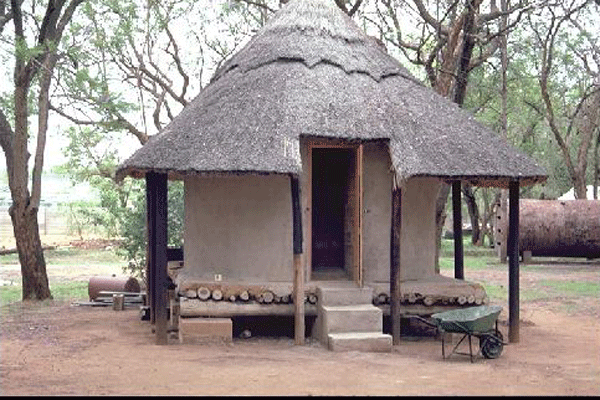
The issue I will deal with in this article reminds me of my mother’s grain storage building when we were growing up. It was a unique one big room that had a wall that literally divided it into sections. The dividing wall had four window-like openings high up that each one led into a compartment. In each compartment, she stored different types of grain. Usually they contained maize, unshelled ground nuts, unshelled jumbo nuts and finger millet.
farm & garden with Doreen Badze

I had no understanding then what that was all about. We referred to that room as hozi/isiphala (granary). I did not like it because there was not enough light coming into the room. The compartments were pitch black inside. Usually it would be my older brother who would lift me up to peep through the openings to see what was in it out of curiosity. I dreaded being sent there because of the darkness — it was scary. I remembered the storytellers always associated storage rooms with deep secrecy that involved storage of traditional valuables. Other than just for food storage, these buildings exist on almost every homestead. They are unique and carry an aura of sacredness in a way. When my brother and I discovered that in one of the compartments there was a sack full of horned cucumbers and pawpaws that were ripening and appetising — we got more curious. We had finally figured out our mother’s hiding place. The new discovery changed my perspective of the storage room. Since I was smaller and slim, it was easier for my brother to assist me up the wall, through the window to get in so we could help ourselves with the newly-discovered treasures. Such was my experience with residential rural grain storage. I had no idea that some kind of chemical would be mixed with some of the grains to stop them from being destroyed by certain pests.
Certainly, I had known of grain weevils at a young age since it always appeared when there was preparation of stored maize grain being made ready for milling. In my last article, I wrote about the misuse of gas toxin tablets that are being used by some farmers who have little understanding of how they work while endangering themselves in the process, all in the name of protecting their precious grain. What then is safe to use for protection of stored grains? All chemicals/pesticides are potentially harmful if not used according to instructions.
As if the common maize weevil was not enough, a few seasons ago, Zimbabwe was invaded by a different pest similar to a maize weevil. I am talking about a larger grain borer. This particular pest, already familiar with most farmers, is not controlled by what was used to get rid of the ordinary maize weevil. Some farmers refer to it as Chikombi while others call its Sadam, or simply LGB. With the anticipated bumper harvest on the way, some farmers have no knowledge or experience of this new grain weevil LGB. However, in my effort to get as much information to the farmers as I can, I met with one of the representatives of a product called Actellic Gold dusting powder that is effectively controlling LGB at the moment, as well as other grain storage insects. This is a syngenta product being distributed by ZFC Limited and Intaba. It is also available in selected retail outlets, as well as some agrochemical stores. The sales support manager said they have a pesticide called Chirindamatura which controls the ordinary maize weevil but was failing to control LGB, hence bringing on board Actellic Gold dusting powder that controls both the maize weevil and LGB. Furthermore, the sales manager urged farmers to pay attention to instructions on the container of the Actellic Gold dusting powder for correct and safe use.
Seedlings available in our nursery are as follows; tsunga paida, rape hobson, king onion tx grano, covo hybrid rugare, cabbage star 3311 and star 3316. Rodade tomato and lettuce commander will be ready in two weeks. Happy gardening week!
Doreen Mutobaya Badze is a retired nurse and passion-driven gardener. She can be reached on Cell: 0779 730 880 or 16 Metcalf Road, Greendale, Harare. Email: [email protected] Facebook page: Badze Garden Nursery











